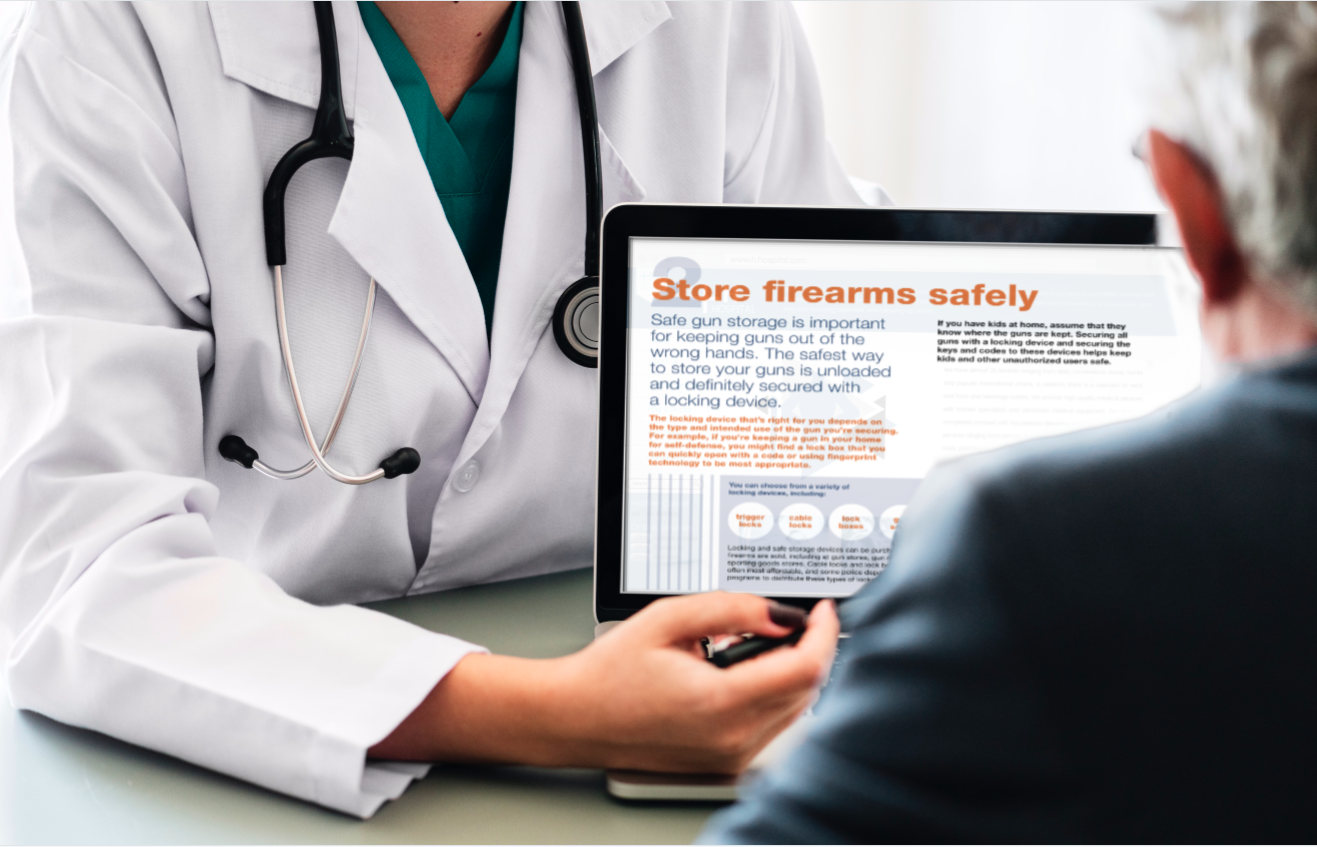Talking with Patients
If you've identified risk factors for firearm injury, your goal in counseling should be to reduce that risk.
The most appropriate risk reduction strategies will vary from patient to patient and will vary for the same patient as their circumstances change.
When firearms are in the home but there is no emergency, aim to inform the patient of the importance of safe firearm storage.
Safe storage means:
- firearms are unloaded
- firearms are locked up with a safe storage device, and
- firearms are stored separately from ammunition, which is also locked up
If someone at risk has access to firearms, you'll want to know whether the firearms are stored such that they are inaccessible to those who shouldn't have access. Consider together with the patient if changes to the firearm storage practices could reduce risk.
You might want to find out:
- Is the patient, or is the patient’s caretaker, the owner of the firearm? What's the capacity of the person you’re counseling to ensure safer storage practices?
- Whose risk is elevated? Is it the patient's? Or is it someone else in the patient's home?
- Has anything changed in the patient’s home since a firearm was first brought there? Maybe the patient has had a child, or maybe someone in his home has recently experienced thoughts of self-harm.
- What knowledge or tools can you equip the patient with to help reduce risk of firearm injury and death for everyone in the home?
You can begin the firearms conversation by saying
“Now I want to ask you a couple of questions about firearms. Are there any firearms in or around your home?”
If the patient answers with a yes, you can probe:
“Do any of these firearms belong to you?”
and
"Who has access to them?”
More detail is often helpful. If there are firearms in the home, find out more by asking,
“Are all the guns and ammunition locked up in some way?”
and
“Are all of the firearms stored so they can’t be accessed by unauthorized users?”
Take a respectful approach.
Your approach should be tailored to the individual patient's risk factors and should relate clearly to the patient's health and wellbeing.
Acknowledge local customs related to firearms and firearm ownership, and keep in mind that firearm ownership can be reflective of longstanding beliefs and values. Keep in mind that many gun owners are knowledgeable about safe firearm storage and take seriously the repsonsibility that comes with owning firearms, including keeping others safe from harm.
Remember to follow up.
Once you’ve introduced the topic with the patient, whether or not it was an emergency, find out what happened during the patient’s next visit. Circumstances change, and continuous evaluation of whether or not everyone in the home is safe with firearms is important for assessing risk and working to reduce risk when necessary.
Keep in mind the evidence that access to firearms as well as firearm ownership are associated with increased risk of violent death.1, 2 When a firearm is present, risk of violent death is increased for everyone in the home.3
No law prohibits you from including patient information on firearms in the medical record, but you should be prepared to answer patients’ questions about what you will do with their information regarding firearms.
If you think it relevant, follow up about access to firearms at the next visit.


 Questions or comments?
Questions or comments?